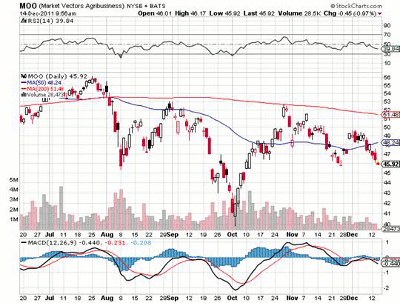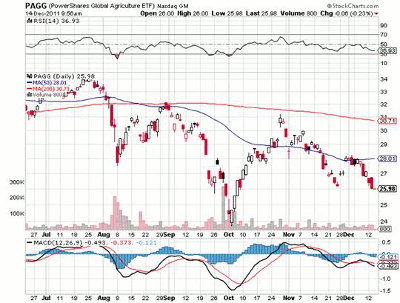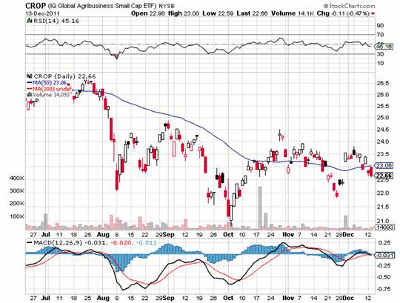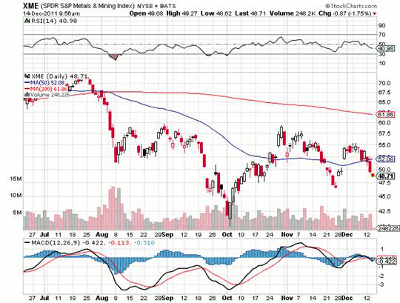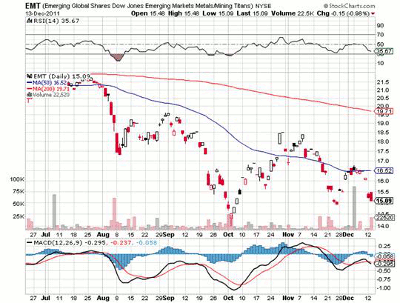Two commodity-focused ETFs have joined the ranks of the underperforming funds to be closed, leaving shareholders to find other funds to replace them or accept cash payouts upon closure.
Heading into 2011, many observers of the ETF industry were warning that this year could see a wave of fund closures, as ETFs that were failing to generate positive cash flow for the institutions behind them could be shuttered. That wave of contraction has yet to really play out, as only a handful of ETFs have closed their doors and returned investor money in 2011.
FaithShares, the firm behind a lineup of faith-based products, pulled the plug a few months ago and opted to reorganize as a turnkey ETF company. Javelin shut down its contrarian ETF after failing to gain traction, and a handful of other companies have made similar moves.
With 2011 drawing to a close, the ETF death count for the year is slated to climb a bit higher. ALPS announced this week that it will close down two commodity-focused products before the end of the year. The ETFs to be closed are:
Jefferies TR/J CRB Global Agriculture Equity Index Fund (CRBA): This ETF consists of companies engaged in the production and distribution of agricultural products including grains, livestock, fertilizers, chemicals, seeds, traits, and equipment. CRBA’s biggest holdings include Potash Corp. (POT) (6.5%), Monsanto (MON) (6.2%), and Syngenta (SYT).
Jefferies TR/J CRB Global Industrial Metals Equity Index Fund (CRBI): This ETF consists of stocks engaged in the production and distribution of base/industrial metals and base/industrial metal products, including copper, aluminum, iron ore, steel, and others. Major holdings of CRBI include Rio Tinto (RIO) (about 8%), BHP Billiton (BHP) (7%), and Xstrata PLC (XSRAF) (5%).
The closings won’t have much of an impact on overall assets; CRBA currently has about $9 million in assets under management (AUM), while CRBI’s total is only about $3 million.
NEXT: Commodity ETFs to Replace CRBA
|pagebreak|Alternative ETF Options
ETFs have become popular vehicles for investors looking to target stocks of commodity-intensive companies. The commodity producers category includes a number of broad-based funds, as well as several more targeted ETFs covering everything from gold to timber to agribusiness.
For investors looking to redeploy positions in CRBA, there are a handful of potential opportunities.
Market Vectors Agribusiness ETF (MOO): This ETF has seen a surge in interest in 2011, growing to more than $5 billion in assets. MOO’s portfolio includes many of the same companies that make up CRBA, and includes allocations to a variety of different agriculture-related stocks.
PowerShares Global Agriculture Portfolio (PAGG): This ETF offers generally similar exposure; PAGG’s portfolio consists of several different companies with a tilt towards international stocks.
IQ Global Agribusiness Small Cap ETF (CROP): This ETF offers unique agricultural exposure; whereas MOO and PAGG focus primarily on large cap stocks, CROP’s portfolio targets small-cap companies.
NEXT: Metals ETFs to Replace CRBI
|pagebreak|For those who maintained positions in CRBI, there are similarly some options out there.
S&P Metals & Mining SPDR (XME): This fund features significant overlap with CRBI, investing in large mining firms. XME consists of about 40 stocks and is linked to an equal weighted index that results in balanced exposure.
Emerging Markets Metals & Mining Index Fund (EMT): This ETF targets mining companies in the emerging markets, an asset class that maintains a bright long-term outlook thanks to ongoing urbanization in the developing world.
December 22 is scheduled to be the last day of trading for the two ETFs, which will then begin the process of winding down. Investors still holding the ETFs on December 28 will receive a cash distribution.
It’s important to avoid “panic selling” of ETFs destined to be shuttered; that can result in liquidating at a discount to net-asset value (NAV), which only worsens the situation.
By Michael Johnston of ETFdb.com

